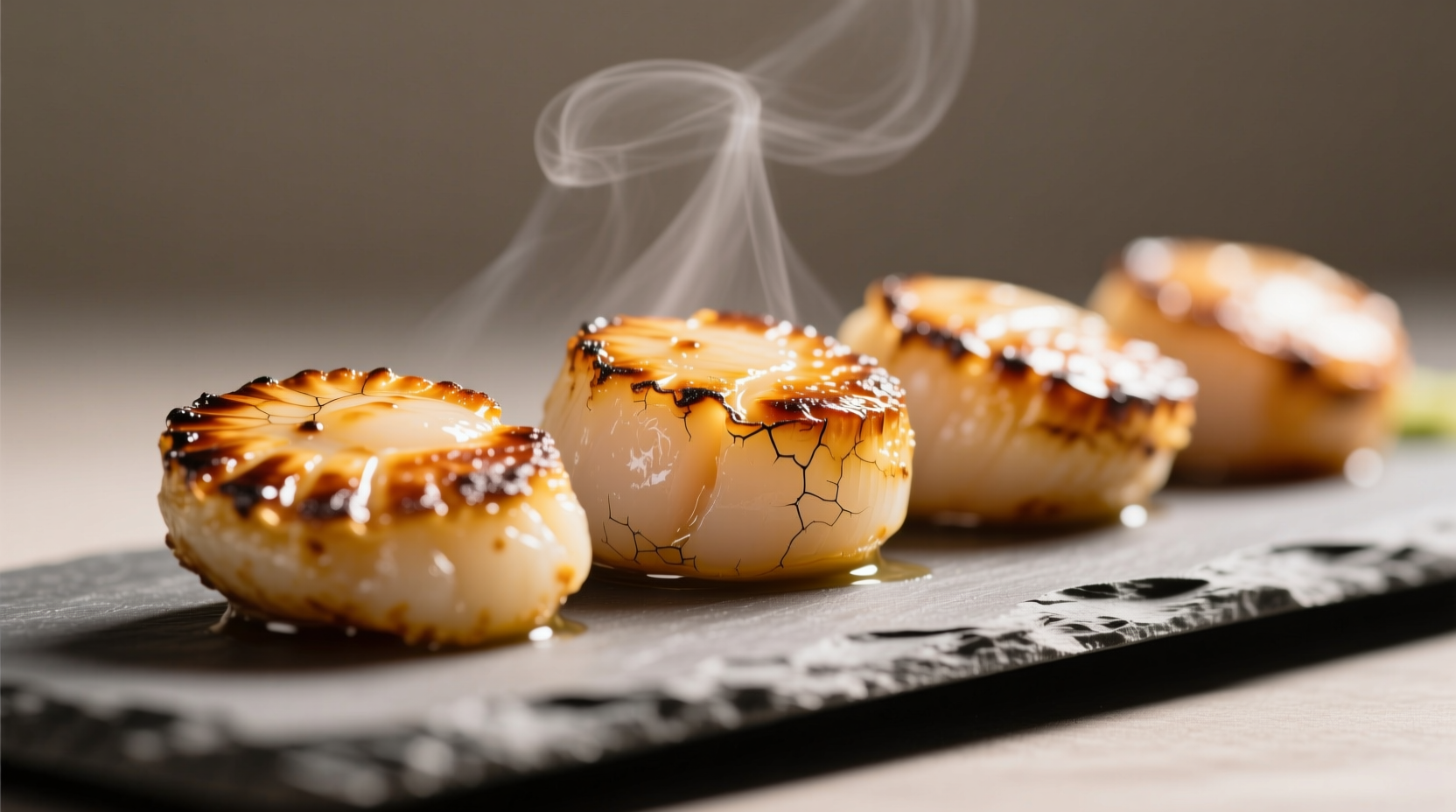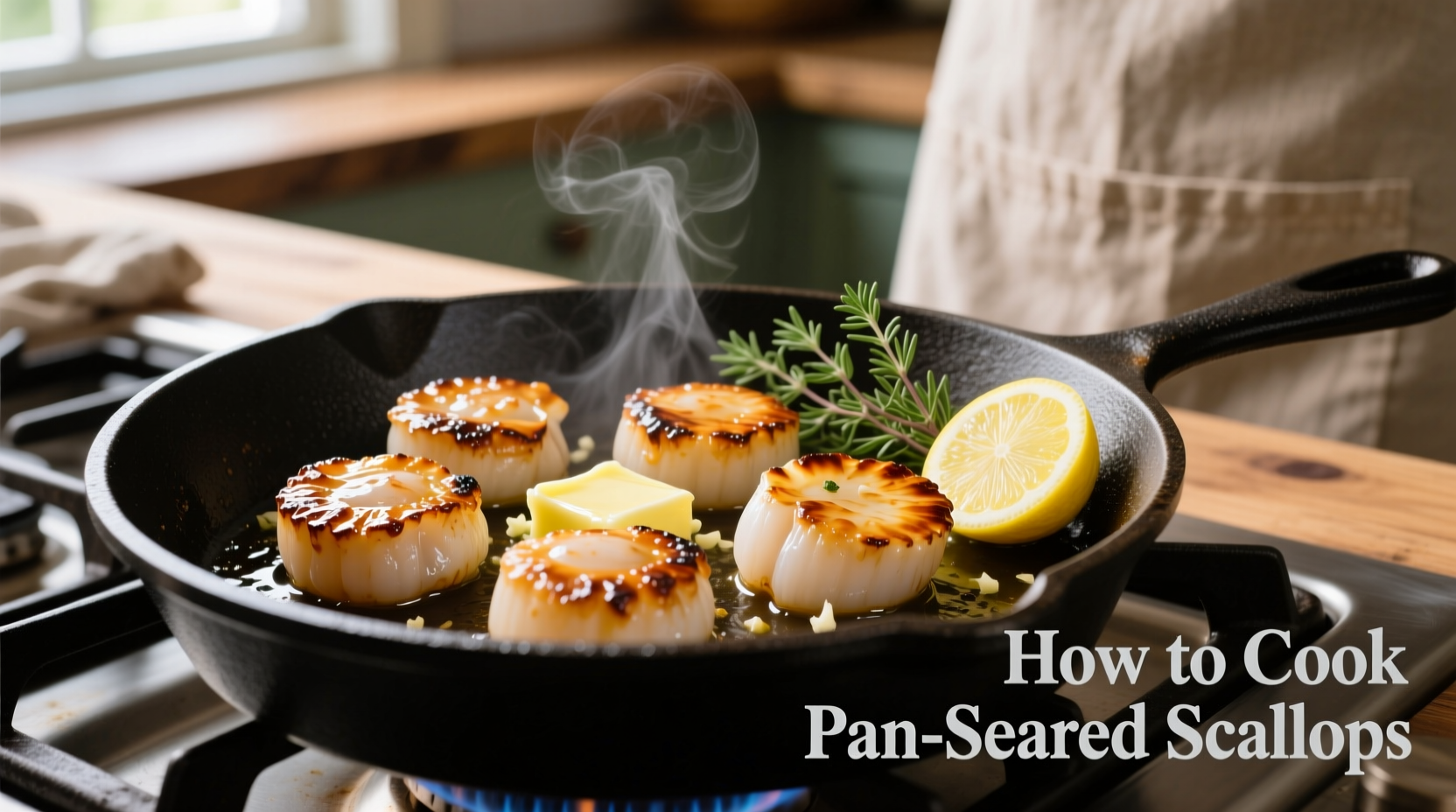Perfectly seared scallops feature a golden-brown crust with a tender, translucent interior—achieved in under 10 minutes with dry scallops, a hot pan, and minimal flipping. This guide reveals professional techniques for consistently flawless results, including how to select quality scallops, proper drying methods, ideal heat control, and timing cues that prevent rubbery texture.
Why Pan-Seared Scallops Deserve a Spot in Your Cooking Repertoire
When executed correctly, pan-seared scallops deliver an exquisite balance of textures and flavors that elevate any meal. Unlike many seafood preparations, this technique requires minimal ingredients but demands precision—making it both accessible for home cooks and impressive enough for special occasions. The secret lies in understanding the science behind the Maillard reaction and moisture control, which transforms simple ingredients into restaurant-quality dishes.
Scallop Selection: Your Foundation for Success
Not all scallops perform equally in the pan. Understanding the differences between wet-packed and dry-packed varieties is critical for achieving that coveted crust. Wet-packed scallops, treated with sodium tripolyphosphate (STPP), retain excess water that steams rather than sears during cooking. Dry-packed scallops, harvested and chilled without chemical additives, provide superior browning and natural sweetness.
| Scallop Type | Moisture Content | Browning Capability | Flavor Profile |
|---|---|---|---|
| Dry-packed | 78-82% | Excellent crust formation | Natural sweetness, briny notes |
| Wet-packed | 85-90% (with STPP) | Poor browning, steams instead | Chemical aftertaste, diluted flavor |
This comparison, based on FDA seafood guidelines, explains why professional chefs exclusively use dry-packed scallops for searing. The lower moisture content allows immediate contact between the scallop surface and hot pan, triggering the Maillard reaction essential for flavor development.
Preparation: The Critical 30-Minute Window
Proper preparation separates successful searing from disappointing results. Begin by inspecting each scallop for the small, tough side muscle (often called the 'foot')—a remnant of the scallop's attachment mechanism. This piece, if left intact, becomes rubbery during cooking. Gently pinch and pull it away; it should detach cleanly.
Next, moisture management becomes your priority. Place scallops on a double layer of paper towels, cover with additional towels, and refrigerate for 15-30 minutes. This critical step removes surface moisture that would otherwise create steam instead of sear. Never rinse scallops before cooking—this reintroduces moisture that sabotages browning.
Seasoning should occur immediately before cooking. Excessive salt too early draws out moisture through osmosis. Use kosher salt and freshly ground black pepper for optimal flavor distribution.
The Pan-Searing Technique: Heat Control is Everything
Equipment matters less than technique when pan-searing scallops. While cast iron provides excellent heat retention, stainless steel works equally well if properly preheated. Non-stick pans generally don't achieve sufficient heat for proper browning.
Follow this precise sequence for perfect results:
- Preheat your pan over medium-high heat for 3-4 minutes until a drop of water dances across the surface (the Leidenfrost effect)
- Add high-smoke point oil (avocado, grapeseed, or clarified butter) and swirl to coat
- Place scallops in the pan with adequate space between them (crowding lowers pan temperature)
- Press gently for 5 seconds to ensure full contact with the pan
- Resist the urge to move them for 2-3 minutes until a golden crust forms
- Flip once using tongs and cook 1-2 minutes more until just translucent
The USDA recommends cooking seafood to an internal temperature of 145°F (63°C), but for scallops, visual cues provide more reliable doneness indicators. Perfectly cooked scallops should feel slightly firm yet yielding to gentle pressure—similar to the fleshy part of your palm below the thumb. Overcooked scallops become tough and opaque throughout.

Troubleshooting Common Pan-Searing Problems
Even experienced cooks encounter challenges with pan-seared scallops. Understanding these common issues helps you adjust technique in real-time:
- Sticking to the pan: Insufficient preheating or moving scallops too soon. Wait until a natural release occurs (about 2 minutes)
- Excessive moisture release: Inadequate drying or wet-packed scallops. Always use dry-packed and pat thoroughly
- Rubbery texture: Overcooking or using wet-packed scallops. Cook just until opaque in the center
- Inconsistent browning: Uneven heat distribution or crowded pan. Use adequate space between scallops
Serving Suggestions That Complement, Not Compete
The delicate sweetness of scallops shines when paired with simple accompaniments. Consider these professional combinations:
- Lemon beurre blanc sauce with fresh chives
- Seared asparagus with garlic and lemon zest
- Crispy prosciutto and pea puree
- Arugula salad with blood orange vinaigrette
Avoid overpowering the scallops with heavy sauces. The natural brininess works beautifully with acidic elements that cut through richness without masking the seafood's delicate flavor.
Advanced Techniques for Culinary Enthusiasts
Once you've mastered the basics, experiment with these professional enhancements:
- Compound butter finish: Add a pat of herb butter during the last 30 seconds of cooking
- Smoked salt: Finish with a light sprinkle for subtle complexity
- Temperature-controlled cooking: Use an infrared thermometer to maintain precise pan temperature (400-450°F)
Remember that pan-seared scallops perform best as a standalone protein. Attempting to cook multiple components in the same pan often compromises results through temperature fluctuations and flavor cross-contamination.











 浙公网安备
33010002000092号
浙公网安备
33010002000092号 浙B2-20120091-4
浙B2-20120091-4